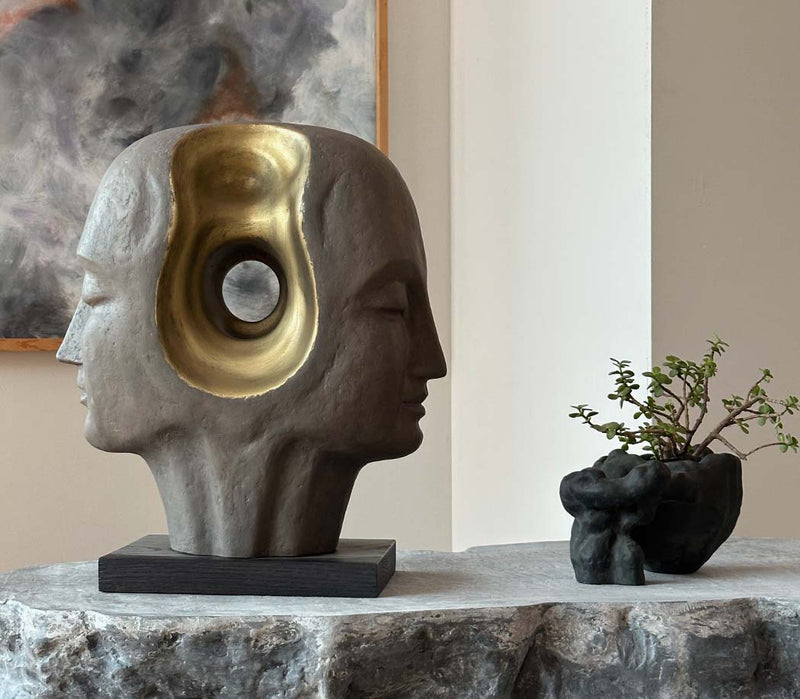Questions like “Why do we need art?” may sound simple at first — the kind you could answer quickly, without a second thought. But for those of us who live and breathe art, who feel its rhythm in the texture of a brushstroke or the curve of a sculpture, the answer is anything but ordinary. At Studio Renaissance, we don’t believe in settling for the surface. We seek deeper truths — ones that echo differently within every soul. That’s why we’ve created a blog dedicated entirely to this question, peeling back the layers of what might seem simple to uncover the magic it truly holds.
From the timeless allure of classical forms to the silent poetry of Abstract Art, the question of why transforms into an invitation to feel, to reflect, and to remember what it means to be human.
Why Do We Need Art?
How often have you buried your emotions and never revisited them? They are so buried that you even forget you have them within you. But art is one thing that holds the power to resurface them. It even has the power to generate new feelings as well, and hence, art makes you feel like a magical Totem.
Art carries a profound ability to evoke a wide range of emotions, and this causes a personal experience when you come across such an art piece. It speaks directly to your soul and connects you to a deeper realm of unknown possibilities.
This is the science behind aesthetics. Each color, texture, and brush stroke is responsible for making you feel what you feel upon looking at an art piece.
Every workpiece here promises to make you feel feelings you may have never encountered before. The mystical feelings, the into-the-unknown feelings, the buried feelings—you will be taken into a different world!
Paracosm: A Child’s World
Children are gifted with the ability to imagine and create a world beyond real-life limitations inside their minds. This invented world is called Paracosm.
You see, children often create a complex, imaginative world inside their minds and hold the power to envision that world around them. Where you see a simple carpet floor, they might see lava and may jump on furniture to get across and be able to avoid “burning in lava”
Where you see a mess of blankets over the sofa, for them it's a castle!
Does it not sound amazing? Children can just create a whole new world and come up with great stories. And how does art help children? Art acts as a gateway to that world of theirs.
A child’s imagination is limitless and if they are given the freedom to be able to express their imagination through art, the world may get some of the best artists. To view the world from a child’s mind is to view the world through God’s eyes and art becomes a medium to show what these eyes see, what they envision.
And hence, art plays an important role in a child’s life.
Beautify Your Surroundings
A plain white wall always looks better when paired with a contrasting set of colors or when a dark-colored wall gets some artwork piece hung on it to balance it out. Art surely does beautify and enhance your surroundings.
Turning a mundane environment into a spiritual space by adding sculptures and paintings leads to a greater emotional resonance between people and the surroundings. People feel more attached to a place where they come across some art piece that makes them feel deeper feelings. As stated before, art makes you feel, and making it part of your surroundings ensures a greater experience and use of space.
Art pieces are supposed to carry this magnitude to enhance the environment it's put in. With the personal touches put by our artists, every piece of art proves to be a powerful beautifying asset to your surroundings.
Psychomachy: Inner Conflicts Shaping Artistic Brilliance
As humans, we often battle with inner conflicts between our minds and our souls. When logic and realism clash with emotions and realism. This conflict within us is termed Psychomachy.
And this inner conflict often leads to artistic brilliance.
For artists, the only way they can express themselves is through their art. Every brush stroke on a canvas or curve on a sculpture may be an artist's expression of his inner conflict. His way of communicating his battles solely lies in how he communicates with his canvas.
And as for those who see such an art, they may feel the conflict as well. You may come across some artwork that might resonate with the psychomachy within you. You will feel relatable to the artist and connect with the art at a deeper level.
You never know when you come across an art piece that resonates with your inner conflict and makes you realize that you are not alone. This realization that you are not alone who experiences this battle will make you feel better and more connected. You’ll feel oneness with those around you.
Art Is An Embodiment of Culture
Art plays an important role in spreading cultural awareness among people. The artists of the world—the ones who express boldly through their creations dreams to create art that connects people to their rich culture. They do not focus on encouraging just one culture, but the plethora of cultures. This is what makes artists different from the crowd.
Culture should be embraced by people as they should be aware of their roots. Art helps in conveying a story of that culture, it can convey emotions and sentiments. This could result in oneness among people as they realize that ultimately they all carry the same roots of humanity.
To feel whole with your existence, you should enlighten yourself with the knowledge of your culture. How they survived, how the traditions formed and evolved, and how you are who you are because of your culture. Your culture is part of your identity and you must be made aware of it.
The Final Verdict
We can conclude that art is the essence of the sole existence of the world around you. Everything is art. The leaf on a tree, the currents of the sea, the shades of green; art is in everything.
Artists across the world are here to have you form a sacred connection with art. To connect you with your cultural roots, to have you realize how art helps you be who you will to become. How art helps children, how art makes you feel, how art beautifies your surroundings, and how art represents inner conflicts.

